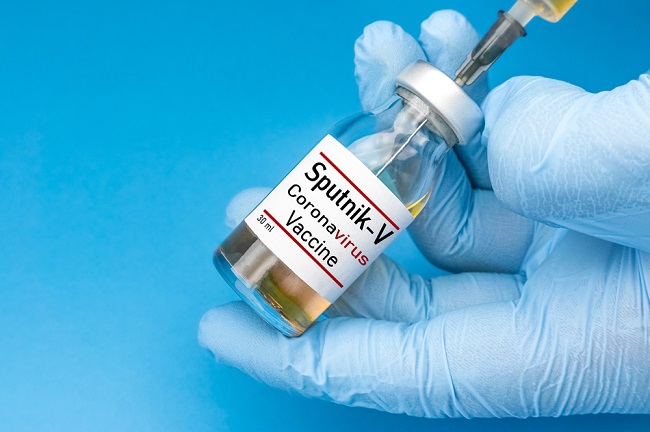A reconstructive ophthalmologist is a doctor who has special expertise in treating abnormalities or disorders in the structure and function of the eye, as well as the surrounding area. These areas include the eyelids, bones and eye sockets, tear ducts, forehead, and the center of the face.
To become a reconstructive ophthalmologist, a general practitioner must first undergo ophthalmology education. After completing his specialist education, then the doctor can continue his subspecialty education in the field of eye reconstructive surgery.

Eye Conditions Treated by Reconstructive Ophthalmologists
The following are some of the conditions that a reconstructive ophthalmologist can treat:
1. Problems with tear ducts
One of the most common problems with tear ducts is tear duct blockage. Blockage can occur in the nose, eyelids, or the edges of the eyelids. This condition often occurs in infants or children, but sometimes adults can also experience it.
When the tear duct is blocked, a person may experience symptoms such as watery eyes, discomfort in the eye, or a lump in the tear duct. In certain cases, tear duct blockage can also occur with a tear duct infection.
2. Disorders of the eye
There are several eye disorders that can be treated by a reconstructive ophthalmologist, including:
- Injuries or injuries to the eye, such as broken bones around the eye socket and stab wounds to the eye
- eye cancer
- Eye deformities, for example the eye that goes too deep into the eye socket (enophthalamos) and protruding eyes (exophthalmos)
3. Disorders of the eyelids and face
Some of the disorders of the eyelids and face that a reconstructive ophthalmologist can treat are:
- Ptosis or drooping and difficult to lift eyelids
- Dermatochalasis or excess skin on the eyelids
- Ectropion, which is a condition when the eyelids fold outwards
- Entropion, which is a condition when the eyelids fold into the eyeball and make the eyelashes hurt the eyeball
- Blepharospasm
- Hemifacial spasm (HFS), twitching on one side of the face
- Meige syndrome, a rare disorder characterized by muscle contractions in the jaw, tongue, and eyes
4. Trichiasis
Trichiasis This is a condition when the eyelash growth is abnormal or in the wrong direction. Trichiasis can cause eye irritation to blindness due to permanent damage to the cornea.
This condition often causes symptoms in the form of red and sore eyes, watery eyes, easy glare or sensitivity to light, and visual disturbances.
5. Endophthalmitis
Endophthalmitis is a condition when the eyeball and the tissue around the eye become inflamed due to a severe infection. This infection can occur due to injury to the eye, such as a stab wound or the entry of a foreign object into the eye, as well as the spread of germs or fungi from other parts of the body, for example in sepsis.
This condition is one of the conditions that need to be treated by a doctor immediately.
Actions Performed by Reconstructive Ophthalmologists
Reconstructive ophthalmologists can provide consultations, diagnose diseases, and determine treatment for patients with eye disorders. Handling can be done by giving drugs or by medical measures, such as surgery.
The following are some types of surgery that can be performed by a reconstructive ophthalmologist:
Blepharoplasty
This action is done to improve the shape of the eyelids. Eyelid surgery or blepharoplasty is generally done by removing or improving the position of the skin and fatty tissue around the eyelids.
This surgery is often performed to improve the patient's appearance, for example because the eyelids are asymmetrical or the eyelids appear droopy. However, apart from cosmetic reasons, eyelid surgery can also be performed to treat disorders of the eyelids, such as ectropion and entropion.
Eyebrow lift surgery
Eyebrow lift surgery is one type of plastic surgery that can be performed by a reconstructive ophthalmologist. This surgery aims to lift and flatten the eyebrows and eliminate wrinkles or sagging on the forehead.
Ptosis repair surgery
This repair procedure is performed based on the underlying cause of the ptosis. Ptosis itself is caused by abnormalities of the nerves or eye muscles that function to regulate the process of opening and closing the eyelids.
In treating ptosis, doctors may perform eye surgery to tighten the eye muscles or repair the nerves in the eye.
Dacriocystorhinostomy (DCR)
DCR aims to repair blocked tear ducts and allow the patient's tears to flow smoothly. This action is done by making an incision on the side of the nose or it could be with an endoscope.
Eye removal surgery
Eye removal surgery is generally performed to remove eye tissue that has been badly damaged and cannot be repaired, for example due to tumors or eye cancer and severe infections or serious injuries to the eye. Eye removal surgery can be done with two techniques, namely evisceration and enucleation.
Evisceration is performed by removing the cornea and the inside of the eyeball, but retaining the white part of the eye (sclera). Meanwhile, enucleation is the removal of the entire eye, including the sclera.
After the patient's eye is removed, the doctor may apply a replacement eye or prosthetic to improve the patient's appearance. However, this prosthetic eye cannot restore vision that has been damaged.
In addition to surgery or surgery, reconstructive ophthalmologists can also perform other medical procedures such as giving Botox injections to the eyelid muscles and eyelash removal or epilation. This epilation can be done in cases of trichiasis.
When Should You See a Reconstructive Ophthalmologist?
Patients will usually be referred to a reconstructive ophthalmologist by a general practitioner or an ophthalmologist. However, apart from being a referral, patients can also consult directly with a reconstructive ophthalmologist if they experience the following symptoms or conditions:
- Pain in the eyes
- Red and swollen eyes
- Asymmetrical eye shape
- Sagging eyelids
- Difficult to open eyes or eyelids difficult to lift
- Injuries to the eye, such as a stab wound to the eye or a broken bone around the eye socket
- Bumps appear in the eyes or around the eyes
- Eyelashes hurt the eyes, for example because the eyelids are folded into the eye
Preparation Before Visiting an Ophthalmologist Reconstructor
Before seeing a reconstructive ophthalmologist, you are advised to prepare the following so that the doctor can more easily determine the right treatment:
- Make notes regarding medical history and medical treatment that has been done, including drugs that have been prescribed
- Take notes on the complaints you feel, how long the complaints have been going on, and what are the precipitating factors
- Bring the results of previous medical examinations if any, for example a biopsy, blood test, ultrasound, or CT scan of the eye
If you find it difficult to choose a reconstructive ophthalmologist, you can ask for a recommendation or referral from a general practitioner or ophthalmologist. The doctor can refer you to a reconstructive ophthalmologist according to the diagnosis of the eye disease you are experiencing and its severity.









